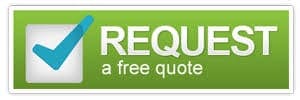![]()
The Ultimate Guide to Choosing the Right Time Tracking Software for Your Team
In today’s digitally-driven work environment, keeping tabs on time and task management is paramount for ensuring productivity and efficiency. Time tracking software, once merely a tool for freelancers to bill hours, has evolved into a multi-faceted asset for businesses of all sizes. But with the plethora of options available, how can you determine the best fit for your team? This guide dives deep into the realm of time tracking software, helping you navigate the waters to find your perfect tool.
Understanding the Need for Time Tracking Software
Before diving into the specifics of different software, it’s essential to understand why you might need one in the first place. Whether you’re aiming to enhance productivity, improve project management, or simply ensure accurate invoicing, defining the core reasons will guide your selection process.
Features to Consider
1. User-Friendly Interface:
Complex systems can discourage use. The software should be intuitive, easy-to-use, and require minimal training.
2. Cross-Platform Compatibility:
With many teams now working remotely and using various devices, it’s crucial that the software functions seamlessly across different platforms – be it Windows, macOS, Android, or iOS.
3. Reporting and Analytics:
It’s not just about tracking time but understanding how it’s spent. Look for software that offers detailed reports, providing insights into work patterns, productivity, and more.
4. Integration Capabilities:
Can it integrate with other tools your team uses, like project management software, communication tools, or invoicing platforms? Integration can streamline processes and reduce manual work.
5. Security:
Given that the software will have access to project details, client information, and other sensitive data, robust security measures are non-negotiable.
6. Customizability:
Every team has unique needs. Opt for software that allows you to customize features, reports, and alerts to align with your specific requirements.





Types of Time Tracking Software
- Automated vs. Manual:
While some tools automatically track time spent on tasks, others require manual entry. The choice between them hinges on the nature of tasks and the level of accuracy desired. - Project-Based vs. Task-Based:
Some software is designed to track entire projects, ideal for teams working on long-term initiatives. Others focus on individual tasks, more suited for short-term or varied assignments. - Freelancer vs. Team-Oriented:
Some tools are tailored for individual freelancers, focusing on invoicing and client management. Others are built for teams, emphasizing collaboration and project management.
Budgeting and Pricing Models
Time tracking software comes with varied pricing models. Some offer a one-time purchase, others a monthly or annual subscription. There are even free versions with limited features. Balance your budgetary constraints with the features you deem essential.
Test and Feedback
Once you’ve shortlisted a few options, most companies offer trial versions. Utilize these to test the software with your team. Gather feedback, understand the pain points, and assess the overall ease of use. This hands-on approach can be invaluable in making a final decision.
Choosing the right time tracking software is less about the bells and whistles and more about finding a tool that aligns with your team’s workflow and goals. By understanding the core needs, being clear about the features you value most, and not hesitating to test-drive a few options, you can invest in a tool that genuinely amplifies efficiency and productivity. Remember, in the world of time tracking, one size doesn’t fit all – but there’s definitely a perfect fit for everyone.





How Does Time Tracking Software Work?
Time tracking systems, at their core, aim to capture, store, and analyze the amount of time spent on various tasks. But how do they achieve this? Let’s delve into the underlying mechanisms and processes that enable these tools to function effectively.
1. User Input
Most traditional time tracking systems operate based on user input. This means that an individual starts a timer when they begin a task and stops it once they’re done. Some advanced systems can detect inactivity and will either pause the timer or send a prompt to the user, ensuring that only active work time is recorded.
2. Automatic Tracking
Modern time tracking tools often come with automatic tracking features. These tools monitor computer activity to gauge what applications or websites are being used, and for how long. For instance, a designer might have three hours logged under a design software, indicating active work in that application. However, be cautious; privacy is a concern with automatic tracking, so ensure your team is aware and in agreement with this method.
3. Task and Project Classification
To make sense of the logged hours, they need to be categorized. Users can typically tag their time entries with specific tasks, projects, or clients. This classification ensures that, at the end of the day (or week, or month), you can see a detailed breakdown of where time was spent.
4. Integration with Other Tools
One of the reasons time tracking tools are so effective is because they often integrate seamlessly with other productivity tools. For example, if your team uses a project management software, the time tracking tool can pull task names and deadlines, allowing users to simply click on a task to start tracking time against it.
5. Reporting and Analytics
After data is captured and classified, the tool’s analytics come into play. Sophisticated algorithms analyze the logged hours, offering insights into individual and team productivity, task duration estimates vs. actuals, and more. These reports can be invaluable for managers looking to optimize workflows and for individuals striving to enhance their personal productivity.




6. Alerts and Notifications
Many tools offer the capability to set up alerts. These could be reminders to start or stop tracking, notifications about reaching a certain number of hours on a task, or even alerts about potential burnout if too many hours are logged consecutively.
7. Data Storage and Security
A critical backend component of time tracking systems is where and how they store data. Given the potentially sensitive nature of the information (like which client projects are currently active or how many hours an employee works), it’s vital that the data is stored securely, often in encrypted formats, and in compliance with global data protection standards.
Understanding how time tracking systems work is more than just a technical exploration; it’s about appreciating the blend of user input, automation, and analytics that these tools bring to the table. By capturing and analyzing granular data about work habits, these systems provide insights that can be pivotal in enhancing productivity, optimizing workflows, and ensuring project success.
How Much Does Time Tracking Software Cost?
The cost of time tracking software can vary significantly based on features, the size of the organization, deployment method, and whether the solution is customized or off-the-shelf. While it’s difficult to pinpoint an exact average due to these variables, we can provide a general overview to give you an understanding of the potential investment.
Subscription-Based Pricing
Most time tracking software solutions today are offered on a subscription basis, typically monthly or annually. This model is especially prevalent with cloud-based systems.
- Basic Plans: For small teams or businesses just starting out, basic plans can range from free (with limited features) to around $10 per user per month. These versions usually include fundamental time tracking capabilities, some reporting features, and perhaps integrations with a limited number of other tools.
- Mid-Range Plans: Designed for medium-sized businesses or teams with more complex needs, these plans can range from $10 to $30 per user per month. They often offer advanced integrations, enhanced reporting, and features like invoicing or project management.
- Enterprise Plans: For larger organizations with a need for a wide range of functionalities, extensive integrations, and perhaps on-premise deployment, prices can start at $30 per user per month and go up significantly from there. These plans often come with premium support, advanced security features, and customizable interfaces.





One-Time Purchase
Some time tracking systems, especially those meant for on-premise deployment, come with a one-time purchase price. These can range from a few hundred to several thousand dollars, depending on the breadth and depth of features. Keep in mind that while there isn’t a recurring fee, there might be costs associated with updates, maintenance, or scaling the system in the future.
Additional Costs
Apart from the software’s basic price, there could be other associated costs:
- Setup and Installation: Especially for more complex systems or on-premise solutions, there might be a fee for the initial setup.
- Training: While many tools are intuitive, training sessions can ensure your team gets the most out of the software.
- Add-On Features: Some companies offer a modular pricing structure, where you pay for the features you need. This can be cost-effective but be wary of potential upsells.
- Support and Maintenance: Premium support levels or extended maintenance agreements might come with an extra fee.
On average, for a cloud-based time tracking software solution, small to medium-sized businesses can expect to invest between $10 and $30 per user per month. However, the total cost will depend on specific needs, the size of the team, and any additional features or services required. It’s essential to consider not just the upfront or monthly costs but the potential return on investment. Effective time tracking can lead to better productivity, more accurate billing, and improved project management—all of which can positively impact the bottom line.





Benefits of Investing in Time Tracking Software
In today’s fast-paced business world, efficiency and productivity are paramount. Time tracking software, once seen as just a tool for freelancers or consultants, has emerged as a vital asset for businesses of all sizes. The reasons for its growing popularity are numerous. Below are some of the compelling benefits of investing in a robust time tracking system.
1. Enhanced Productivity
Understanding how time is spent allows for a more streamlined work process. By tracking tasks, companies can identify which activities are time-consuming, allowing them to refine processes or provide the necessary resources to make the task more efficient.
2. Accurate Billing
For businesses that bill clients by the hour, such as consultancies or legal firms, accurate time tracking is essential. Time tracking software ensures every billable minute is accounted for, leading to precise invoicing and increased revenue.
3. Better Project Management
Time tracking provides valuable insights into how long certain tasks or projects take. This data can be crucial for setting realistic timelines, allocating resources for future projects, or determining project profitability.
4. Employee Accountability
With a time tracking system in place, employees become more aware of how they spend their working hours. This increased visibility often results in improved focus and better time management.
5. Reduced Administrative Work
Manual timesheets or attendance systems can be tedious and prone to errors. Automated time tracking reduces administrative overhead and ensures more accurate data collection.
6. Improved Resource Allocation
With a clear view of how time is spent, managers can make informed decisions about resource allocation. If a particular task consistently takes longer than expected, it might be time to allocate more resources or provide additional training.




7. Data-Driven Decisions
Time tracking software often comes with reporting features, offering insights into productivity trends, resource utilization, and more. These data-driven insights can be pivotal in strategic planning and business decisions.
8. Cost Savings
While there’s an initial investment involved in acquiring time tracking software, the potential cost savings in terms of increased productivity, accurate billing, and optimized resource allocation often outweigh the costs.
9. Transparency with Clients
Sharing detailed time reports with clients can foster trust. It demonstrates transparency and ensures clients that they are being billed accurately for the time spent on their projects.
10. Enhanced Work-Life Balance
By understanding how work time is utilized, businesses can also ensure that employees are not consistently overburdened. This can lead to a healthier work-life balance, reducing burnout and increasing overall job satisfaction.
Investing in time tracking software is not just about counting minutes and hours. It’s about gaining a deeper understanding of your business operations, optimizing processes, and ultimately driving growth. In a competitive landscape, tools that offer such insights and advantages are not just beneficial—they’re essential.





Top 10 Best Time Tracking Software in 2023
The digital landscape in 2023 is replete with a wide range of time tracking software, each offering its unique features and capabilities. Here are the top 10 that have garnered significant attention and rave reviews from businesses worldwide.
1. TimeMaster Pro
Known for its intuitive interface and robust reporting features, TimeMaster Pro has become the go-to choice for many enterprises. It seamlessly integrates with various project management tools and provides real-time productivity analytics.
2. ClockifyHub
ClockifyHub stands out due to its scalability. From freelancers to multinational corporations, its flexible plans and diverse feature set cater to a broad audience. The software offers both cloud-based and on-premise solutions.
3. Trackster.io
Emphasizing user experience, Trackster.io offers a minimalist design without compromising on features. Its AI-powered insights help businesses spot inefficiencies and streamline processes.
4. HoursCount
HoursCount boasts advanced invoicing capabilities, making it a favorite for consultants and agencies. Its detailed time logs can be directly converted into professional invoices, streamlining the billing process.
5. EffortlessTime
A newer entrant in the market, EffortlessTime has quickly gained traction due to its innovative time tracking methods, such as voice-activated logs and intelligent task categorization.





6. MomentoSync
Designed for remote teams, MomentoSync provides features like timezone management, asynchronous tracking, and team productivity heatmaps. Its focus on remote work dynamics has made it indispensable for globally dispersed teams.
7. PrecisionClock
PrecisionClock is favored by industries where minute details matter. With high-precision time tracking and micro-task management capabilities, it’s popular among research institutions and technical projects.
8. TimeSage Elite
This platform is known for its versatility. TimeSage Elite offers mobile apps, desktop applications, and browser extensions, ensuring that users can track time wherever they are, on whichever device they prefer.
9. ChronoClever
ChronoClever stands out with its gamified approach to time tracking. By turning productivity into a game, it keeps users engaged and makes the often tedious task of time tracking more enjoyable.
10. NimbusTime
With a focus on privacy, NimbusTime ensures that while businesses can track productivity, the privacy of employees is never compromised. They use advanced encryption and adhere to stringent data protection regulations, making them a top choice for privacy-conscious firms.
The right time tracking software can revolutionize the way a business operates, offering insights, streamlining processes, and enhancing productivity. As we’ve seen, 2023 offers a plethora of fantastic options catering to various needs and business sizes. Whichever you choose, ensure it aligns with your operational needs and organizational goals.




Integration Capabilities of Time Tracking Software
A holistic approach to business management often requires various tools and platforms to interact seamlessly. Time tracking software, being a pivotal part of many businesses’ daily operations, needs to blend well with other tools for maximum efficiency. Let’s explore how integration capabilities can make or break your experience with time tracking software.
Importance of Integrations
Integrations are essential for several reasons:
- Data Consistency: By integrating your time tracking tool with other platforms, like your project management or HR software, you can ensure that all your data remains consistent across all platforms.
- Streamlined Operations: Automatic data transfer reduces manual entry, saving time and reducing the potential for errors. For instance, if your time tracking tool is integrated with your invoicing software, billable hours can be automatically translated into invoices.
- Comprehensive Reports: When your time tracking tool can pull data from other platforms, it can provide more comprehensive reports. This might include overlaying time data with project milestones or comparing hours worked with revenue data.
Key Integrations to Consider
1. Project Management Software: Platforms like Trello, Asana, or Jira, when integrated with your time tracking tool, can offer insights into how much time individual tasks or entire projects take.
2. Invoicing and Accounting Software: Tools like QuickBooks or FreshBooks, when synced with your time tracker, can automate the billing process, ensuring timely and accurate invoicing.
3. Communication Tools: By integrating with platforms like Slack or Microsoft Teams, employees can quickly log hours or get reminders without leaving their primary communication platform.
4. HR Platforms: When time tracking tools are integrated with HR platforms, it’s easier to manage paid time off, sick days, and overtime.
5. CRM Systems: For businesses in the service industry or those with billable hours, integrating with CRM systems like Salesforce or HubSpot ensures that all client interactions, and the time they take, are logged and billed accurately.





Choosing a Time Tracking Tool with the Right Integrations
Not every business will need all the integrations mentioned above. It’s essential to map out your business processes and identify where time tracking intersects with other operations. Once you have this map, you can prioritize integrations based on your unique needs.
When assessing time tracking software, apart from the core features, take a close look at their integration capabilities. Some tools offer native integrations, while others might require third-party tools like Zapier to connect different platforms.
While the core functionality of time tracking software is undoubtedly vital, its ability to integrate with other tools can significantly affect its value to your business. As technology ecosystems within businesses grow, the importance of integrations will only become more pronounced, making it a key consideration for any company looking to invest in a time tracking solution.
Advanced Features and Customization Options in Time Tracking Software
While the fundamental purpose of time tracking software is to log hours and produce reports, advanced features and customization capabilities can truly set a platform apart from its competitors. When a tool can be tailored to the unique needs of a business, it enhances its utility and ensures that the business gets maximum value from its investment. Let’s dive into some of these advanced features and see how they can elevate the user experience.
Custom Reporting
Standard reports might provide an overview, but businesses often have specific metrics and KPIs they’re interested in. Custom reporting features allow managers and business owners to generate reports tailored to their specific needs, whether that’s deep dives into individual project hours or broader looks at team productivity over a quarter.
Mobile Capabilities
With the rise of remote work and on-the-go business operations, mobile capabilities have become more essential than ever. A good time tracking software should have a robust mobile application that allows employees to log hours, view their timesheets, and even access reports from their smartphones or tablets.





Automated Alerts and Reminders
Human error is a given. Employees might forget to log their hours, or there could be anomalies in the timesheets. Automated alerts can remind staff to complete their logs, and managers can receive notifications about any irregularities or if logged hours exceed a certain limit, indicating potential overtime.
Integration with Biometric Systems
For businesses that operate on-site, integrating time tracking software with biometric systems can be beneficial. It ensures accuracy in attendance tracking and can help with security and compliance requirements.
User-friendly Dashboards
The best time tracking software should present data in an easy-to-understand format. Interactive dashboards can help managers quickly assess the status of projects, see which employees have logged their hours, and identify any potential bottlenecks or issues.
Privacy and Security Features
Given that time tracking tools deal with sensitive employee data, robust security features are a must. This includes encryption, regular backups, and role-based access to ensure that only authorized individuals can view or modify data.
The Value of User Feedback
While these features are certainly valuable, one of the best strategies for businesses when evaluating time tracking software is to solicit feedback from the actual users: the employees. They’ll provide insights into the usability of the software, which features they find most beneficial, and where they see room for improvement.
Time tracking software, in its essence, may seem straightforward, but the nuances and advanced features are what transform it from a mere tool to an essential asset for a business. By understanding and leveraging these features, businesses can optimize their operations, ensure accurate billing and payroll, and make data-driven decisions that propel them forward. As the world of work continues to evolve, so too will the features and capabilities of time tracking tools, making it imperative for businesses to stay updated and choose software that aligns with their growth and evolving needs.
